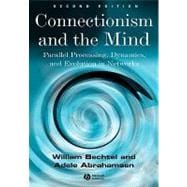
Adele Abrahamsen is Associate Professor of Psychology and Undergraduate Director of the Philosophy-Neuroscience-Psychology and Linguistics Programs at Washington University in St. Louis. She is the author of Child Language (1977).
| Preface | |
| Networks versus Symbol Systems: Two Approaches to Modeling Cognition:.A Revolution in the Making? | |
| Forerunners of Connectionism: Pandemonium and Perceptrons | |
| The Allure of Symbol Manipulation | |
| The Disappearance and Re-emergence of Network Models | |
| New Alliances and Unfinished Business | |
| Notes | |
| Sources and Suggested Readings | |
| Connectionist Architectures:.The Flavor of Connectionist Processing: A Simulation of Memory Retrieval | |
| The Design Features of a Connectionist Architecture | |
| The Allure of the Connectionist Approach | |
| Challenges Facing Connectionist Networks | |
| Summary | |
| Notes | |
| Sources and Suggested Readings | |
| Learning:.Traditional and Contemporary Approaches to Learning | |
| Connectionist Models of Learning | |
| Some Issues Regarding Learning | |
| Notes | |
| Sources and Suggested Readings | |
| Pattern Recognition and Cognition:.Networks as Pattern Recognition Devices | |
| Extending Pattern Recognition to Higher Cognition | |
| Logical Inference as Pattern Recognition | |
| Beyond Pattern Recognition | |
| Notes | |
| Sources and Suggested Readings | |
| Are Rules Required to Process Representations?:.Is Language Use Governed by Rules? | |
| Rumelhart and McClelland's Model of Past-Tense Acquisition | |
| Pinker and Prince's Arguments for Rules | |
| Accounting for the U-Shaped Learning Function | |
| Conclusion | |
| Notes | |
| Sources and Suggested Readings | |
| Are Syntactically Structured Representations Needed?:.Fodor and Pylyshyn's Critique: The Need for Symbolic Representations with Constituent Structure | |
| First Connectionist Response: Explicitly Implementing Rules and Representations | |
| Second Connectionist Response: Implementing Functionally Compositional Representations | |
| Third Connectionist Response: Employing Procedural Knowledge with External Symbols | |
| Using External Symbols to Provide Exact Symbol Processing | |
| Clarifying the Standard: Systematicity and Degree of Generalizability | |
| Conclusion | |
| Notes | |
| Sources and Suggested Readings | |
| Simulating Higher Cognition: A Modular Architecture for Processing Scripts:.Overview of Scripts | |
| Overview of Miikkulainen's DISCERN System | |
| Modular Connectionist Architectures | |
| FGREP: An Architecture that Allows the System to Devise Its Own Representations | |
| A Self-organizing Lexicon using Kohonen Feature Maps | |
| Encoding and Decoding Stories as Scripts | |
| A Connectionist Episodic Memory | |
| Performance: Paraphrasing Stories and Answering Questions | |
| Evaluating DISCERN | |
| Paths Beyond the First Decade of Connectionism | |
| Notes | |
| Sources and Suggested Readings | |
| Connectionism and the Dynamical Approach to Cognition:.Are We on the Road to a Dynamical Revolution? | |
| Basic Concepts of DST: The Geometry of Change | |
| Using Dynamical Systems Tools to Analyze Networks | |
| Putting Chaos to Work in Networks | |
| Is Dynamicism a Competitor to Connectionism? | |
| Is Dynamicism Complementary to Connectionism? | |
| Conclusion | |
| Notes | |
| Sources and Suggested Readings | |
| Networks, Robots, and Artificial Life:.Robots and the Genetic Algorithm | |
| Cellular Automata and the Synthetic Strategy | |
| Evolution and Learning in Food-seekers | |
| Evolution and Development in Khepera | |
| The Computational Neuroethology of Robots | |
| When Philosophers Encounter Robots | |
| Conclusion | |
| Sources and Suggested Readings | |
| Connectionism and the Brain:.Connectionism Meets Cognitive Neuroscience | |
| Four Connectionist Models of Brain Processes | |
| The Neural Implausibility of Many Connectionist Models | |
| Wither Connectionism? | |
| Notes | |
| Sources and Suggested Readings | |
| Notation | |
| Glossary | |
| Bibliography | |
| Name Index | |
| Subject Index | |
| Table of Contents provided by Publisher. All Rights Reserved. |
The New copy of this book will include any supplemental materials advertised. Please check the title of the book to determine if it should include any access cards, study guides, lab manuals, CDs, etc.
The Used, Rental and eBook copies of this book are not guaranteed to include any supplemental materials. Typically, only the book itself is included. This is true even if the title states it includes any access cards, study guides, lab manuals, CDs, etc.